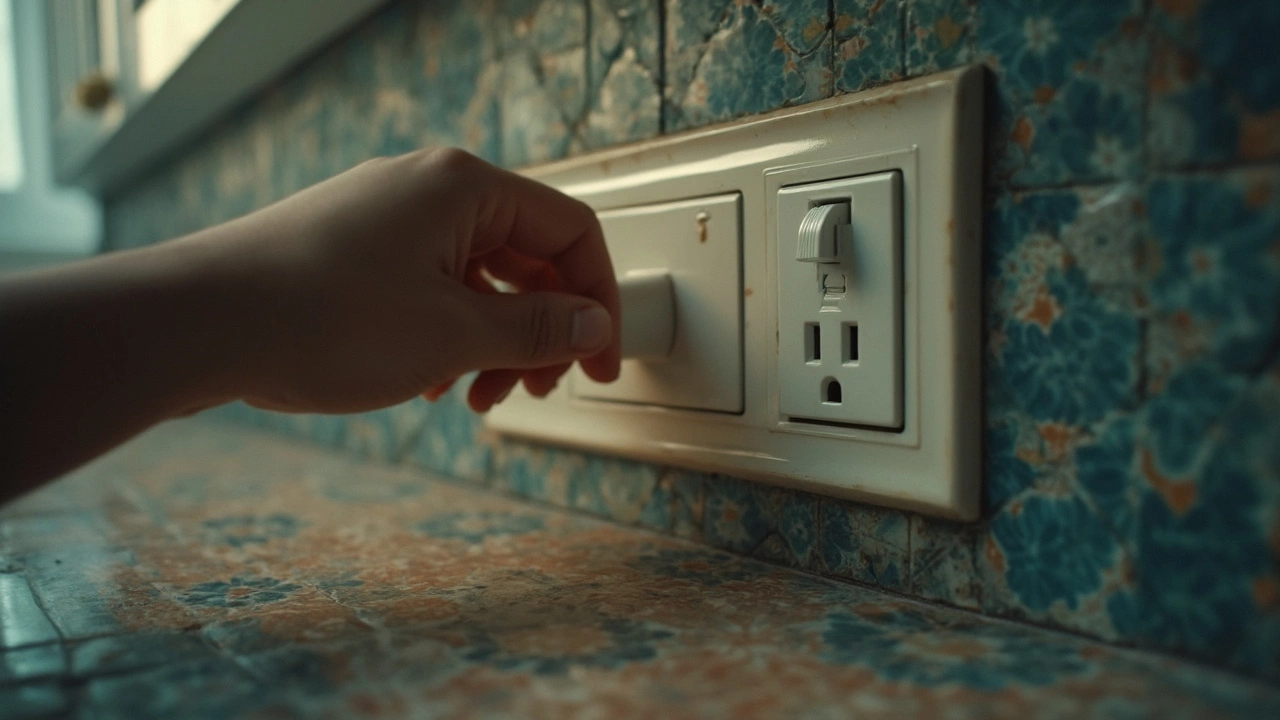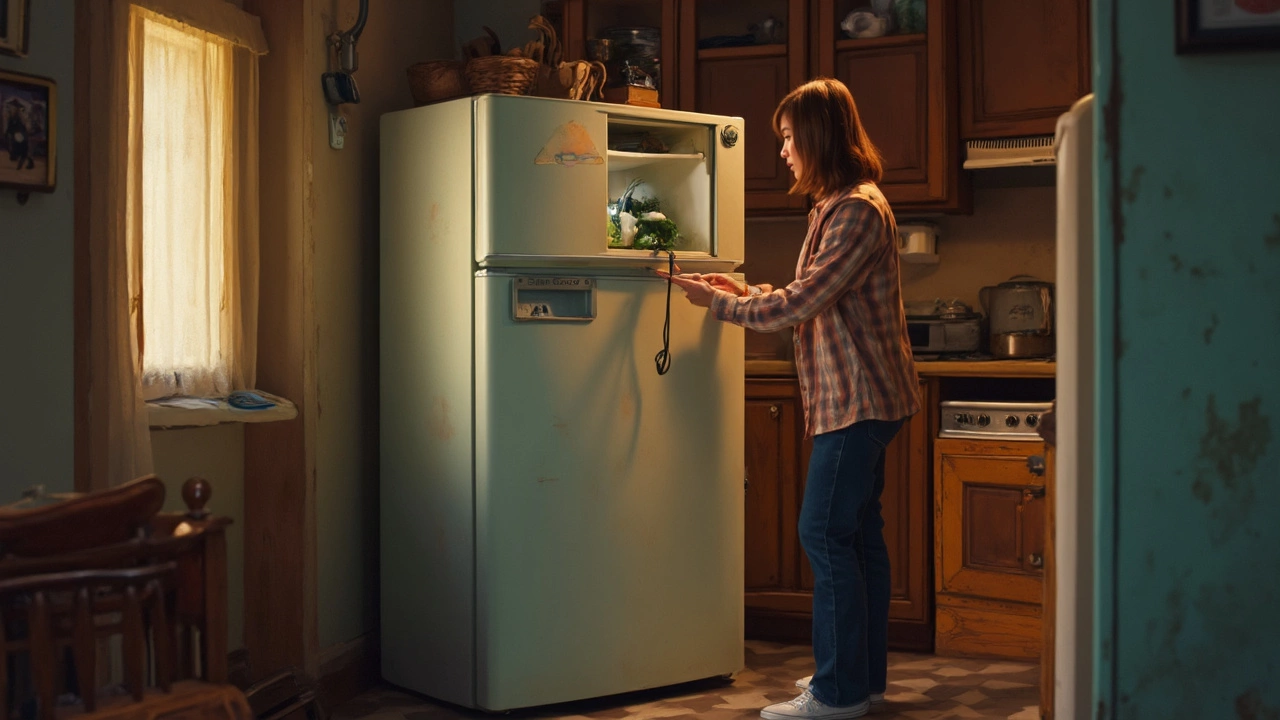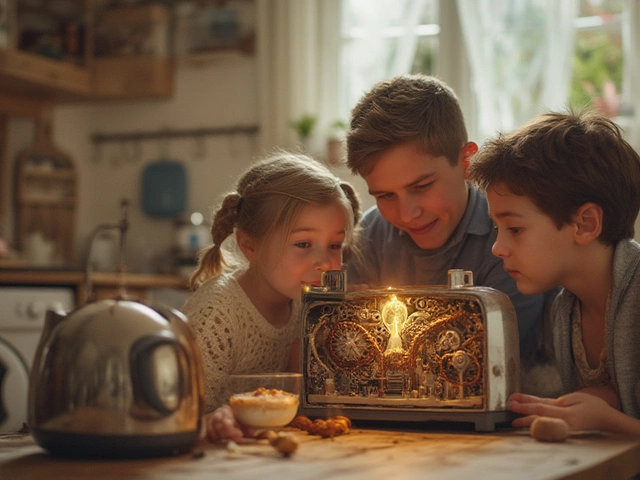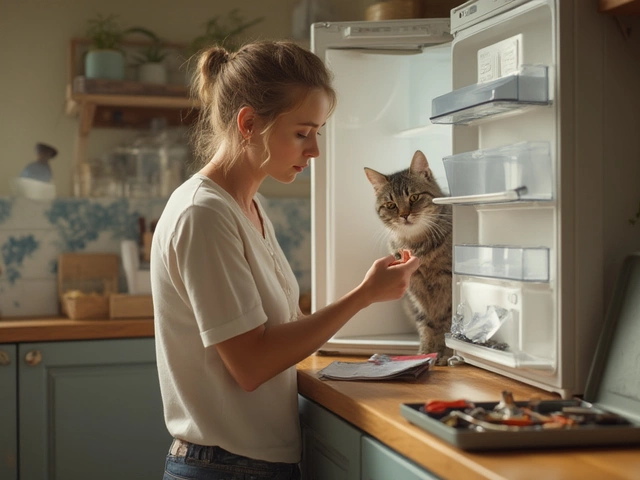So, your fridge has stopped working, and the milk's getting warmer by the minute. What now? First thing's first, don’t panic. Before you start thinking about splurging on a new one or calling the repairman, check one simple thing: the power source. I know, it might sound obvious, but you’d be surprised how often this simple oversight ends up being the problem.
Make sure your refrigerator is still plugged in. I kid you not; I once found the dog chewing on the cord behind our fridge. If it's plugged in and still not humming, shuffle over to the breaker panel and see if a fuse has tripped. Power outages or overloads can cause this, and it’s a quick fix to flip it back. Still no luck? We'll need to delve a bit deeper, but at least you know it's not an electrical glitch.
- The Power Connection
- Check the Thermostat Settings
- Inspect the Door Seals
- Look for Blocked Air Vents
- What to Do if These Steps Fail
The Power Connection
When the fridge stops cooling, the first thing to examine is the power connection. It's like checking if your phone's battery died when it won't turn on. Start with the basics: make sure your refrigerator is securely plugged into the outlet. Things can get a bit chaotic back there with pets and kiddos, right?
Next, check the outlet itself. You can quickly test this by plugging in another appliance, like a hairdryer or lamp. If that doesn't work either, the problem might lie with the outlet, not the fridge. In that case, you might want an electrician's help.
Another common issue is a tripped breaker. Head over to your breaker panel to see if any of the switches have been flipped to the 'off' position. Appliances like your fridge can occasionally cause this if they're drawing too much power. Flipping the switch back to 'on' can sometimes solve your problem instantly.
For those with newer models, check if there's a reset button on your refrigerator. It’s often located inside the appliance or behind it. Pressing it could bring your fridge back to life a lot faster than waiting for someone else to fix it.
And if you've got one of those surge protectors in place, take a peek there too. Sometimes, during a power surge, the protector could cut off the electricity to save your appliance from a nasty spike.
Here's a nifty tip for the tech-inclined: invest in a digital multimeter. This tool can help verify if your socket is providing the right voltage. Most refrigerators need a consistent electrical current of about 120 volts. Anything less can throw it out of whack.
Checking these basics might save you from a costly repair bill or buying a new fridge. It's just like tightening the screws before assuming your bike is broken.
Check the Thermostat Settings
Alright, now that you've ensured your fridge is getting power, let's talk about the thermostat. This little dial's job is to regulate the temperature inside your fridge and freezer, keeping your milk cold and your ice cream perfectly scooped. But if it gets knocked or set incorrectly, it can mess things up.
First, open the fridge and locate the thermostat. It’s usually on the top or side walls inside, marked clearly with some numbers or settings like 'low', 'medium', and 'high'. If your refrigerator's been crowded or things have been reshuffled, the dial might have been bumped from its usual setting. Make sure it’s set to the right temperature.
- For the refrigerator section, aim for around 37°F (3°C).
- The freezer should be about 0°F (-18°C).
If you've got kids at home, like my Callista, you might find her meddling with the settings just for fun. So, keeping an eye on this is worth the trouble.
Also, if your fridge is too near the back wall, air circulation might be restricted, causing the thermometer to give misleading readings. Give it enough elbow room. Easy fixes sometimes solve even the most worrying problems.
Finally, some smart fridges come with digital thermostat displays that might need a reset after a power failure or a glitch. Consult your fridge's manual for instructions on how to reset the settings.
In the end, checking this setting can save you from needless anxiety and potentially costly repairs. And if this isn’t the solution, at least you can tick it off the list and move on to the next troubleshooting step.

Inspect the Door Seals
Let's talk about something that tends to slip through the cracks—literally. Those rubber gaskets around your fridge door aren't just there to look pretty. They’re essential for keeping your food chilled and your energy bills in check. A weak seal might not seem like a huge deal, but it can sabotage everything from your fridge’s efficiency to appliance maintenance costs.
Take a moment to look at the seals all around the door. Check for any visible cracks or pinches. Sometimes, seals get warped or grime builds up, causing them not to sit right against the fridge. This can let the cool air escape and warm air sneak in, sending your refrigerator into overdrive.
Here's a simple trick. Close a dollar bill in the door and see if you can pull it out easily. If the bill slips out without resistance, that seal probably needs attention. If they’re dirty, give them a good clean with warm, soapy water. A quick scrub can sometimes reveal whether dirt or a tear is the problem.
If cleaning doesn’t fix it and you find they’re damaged, replacing these seals is usually a pretty straightforward job. Home centers and online stores have replacements. You just gotta make sure you get the right size.
If you’re into stats, check this out: Poor seals can account for up to 30% of energy loss in refrigerators. So, fixing them can also lighten the load on your electricity bill!
And let’s not forget—sometimes the cause isn’t damage, but simple misalignment. Make sure your fridge is level. Sometimes flooring shifts, and the fridge isn’t sitting quite right, causing seals to miss aligning with the door frame. Use a spirit level if you have one handy, or, in a pinch, just eyeball it.
Look for Blocked Air Vents
You might not think much about the air vents inside your refrigerator, but they're super important for keeping your food cold. These vents allow the cool air to circulate properly, helping the fridge maintain its ideal temperature. When these vents get blocked, say by some oversized leftovers or a stack of pizza boxes, your fridge can’t do its job right.
First, find where the vents are located in your fridge and freezer. Usually, they’re on the side or back panel. Check that nothing is obstructing them. Move or rearrange items if needed, so air can flow freely. It's like trying to breathe with your nose pinched—it just doesn't work well.
If you keep blocking those vents, your fridge has to work harder, which can mess with the temperature and even spike your energy bill. It’s a tiny change but can make a big difference, especially if you’ve got a refrigerator repair in the back of your mind.
Some folks swear by maintaining a bit of organized chaos in the fridge—not packed to the brim but not nearly empty either. Keeping it about three-quarters full can actually help the cool air circulate better. Sounds odd, but the more food in there, the less air space that needs to be cooled from scratch every time you open the door.
- Locate the vents, typically at the back of the fridge or freezer.
- Clear any food items from directly in front of the vents.
- Regularly check to ensure the vents remain unobstructed.
Taking the time to check those vents can keep you from unnecessary fridge troubleshooting, saving potential headaches and extending the appliance's life. It’s an easy habit to get into every time you restock the fridge. I mean, who wouldn’t want to avoid a fridge meltdown right before a big weekend BBQ?

What to Do if These Steps Fail
Alright, you’ve checked the power, reset the breaker, and even made sure the door seals aren’t letting warm air in. Still nothing? It might be time to roll up your sleeves and dig a little deeper. Don’t worry; you’ve got this.
Start by listening for any unusual sounds. If your refrigerator is making odd noises or not making any at all, it could indicate a problem with the compressor or the fans. The compressor is that big chunky thing at the back of your fridge, and it’s vital for keeping things cool. Unplug your fridge and carefully inspect it. If it feels super hot or you notice a burned smell, it might be on its last legs.
- Compressor Running: If you hear it running but the fridge isn’t cooling, it might mean the condenser coils are dirty. Give them a good clean. You’d be amazed what a little vacuuming can do.
- No Sound from Compressor: On the flip side, if your compressor is eerily silent, it could be a faulty relay switch. These are cheap and easy to replace, so consider swapping it out.
Can’t figure it out by yourself? You might need professional help this time. Putting a call to a repair service isn’t the worst thing, especially if your fridge is an expensive high-end model. A professional has the tools and know-how to diagnose issues that aren’t immediately visible.
Now, what if those pros hit you with a quote that's way above what you expected? Weigh the cost of repair against buying a new appliance. Refrigerators, especially energy-efficient ones, can cost a pretty penny, but sometimes it’s worth considering if you’re shelling out loads for constant repairs.




